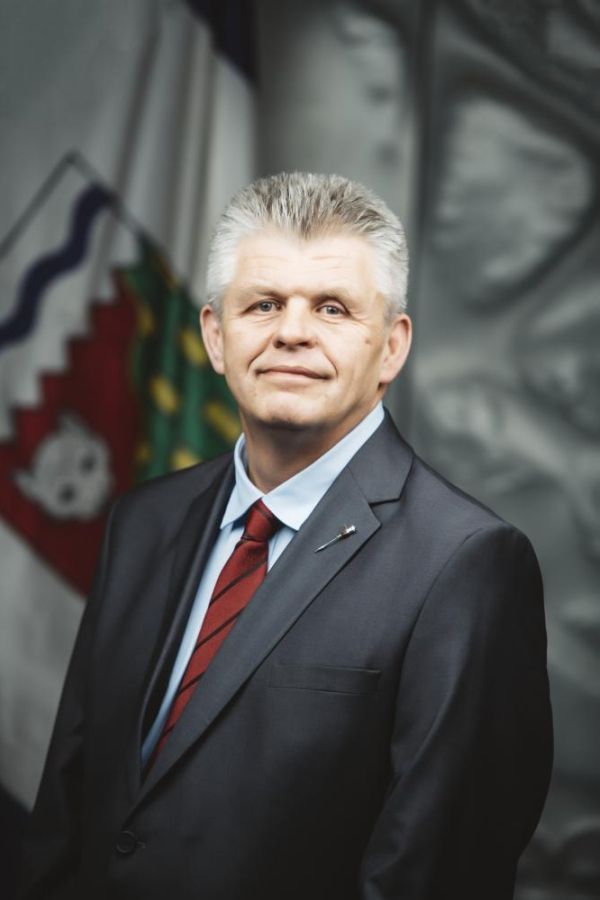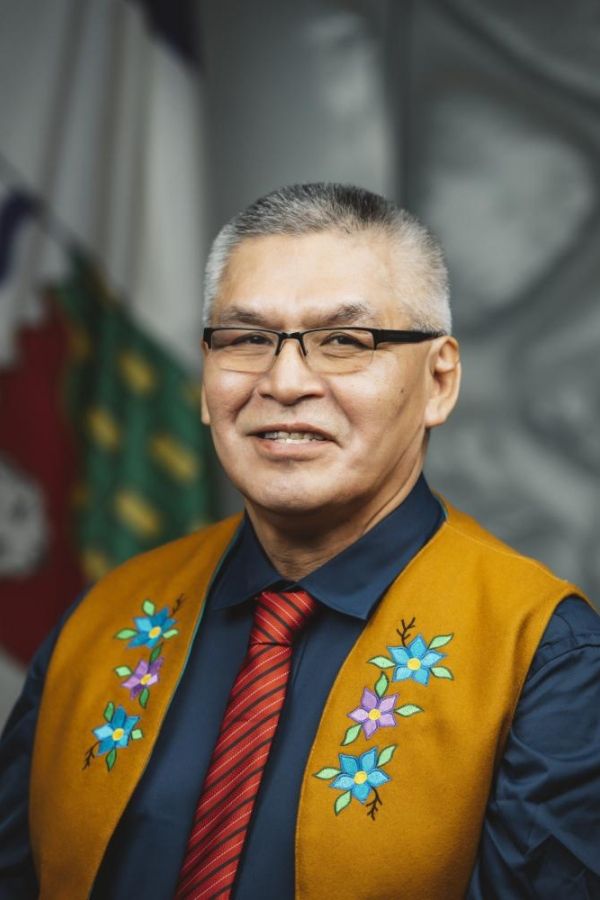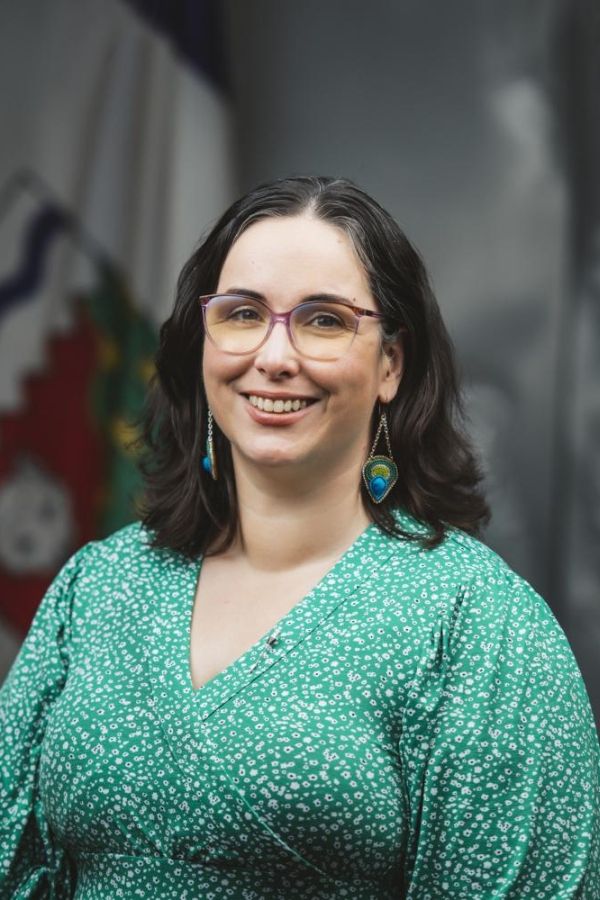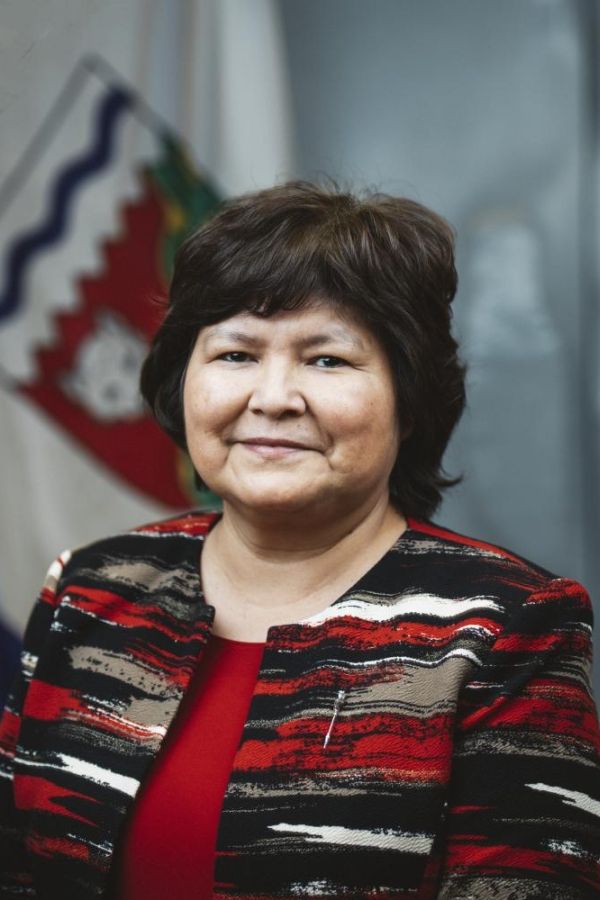
Okay, thank you, Mr. Chair. So in that process, is it going to be possible for reassessment of the planning for this facility in considering the assessment of the projections that the department is going to be undertaking? So I guess what I'm asking in plain words is are we ensuring that the facility is right size for the demand prior to moving forward with construction?
Thank you. I'm going to go to the Minister.

Yes, thank you, Mr. Chair. Mr. Chair, a lot of these projections, you know, when we look at what we have on the waitlist, we use a lot of the data within -- that we have in our system. We initiated intereye, which is a system that will help also. And for more further detail, I can pass it on to the ADM if that's okay with you.
Thank you. I'll go to the ADM.
Thank you, Mr. Chair. So the good news with planning is -- in Hay River is we have a design that's modular in nature. So we were lucky enough to work with the town of Hay River to get a site that's large enough that if we need to add additional beds in the future, we can. But right now we have a plan which is shown in the plan to build 24. We have a design that's incorporating the ability to expand and move forward. The good news is with the bed projections from 2025, all of our new facilities and all the planning will incorporate that knowledge of the bed projections going forward. And our model for building facilities is modular in nature. We can add 12 beds here and an extra 12 beds somewhere else if necessary.
The other thing that's unique about or -- not necessarily unique but that's going on in Hay River is there's an existing facility, Woodland Manor, that's reaching the end of its useful life that at some point in the future we're going to have to make investment in. We're currently investing in critical pieces in that infrastructure to make sure it lasts -- we get the most useful life out of it so we can get the new facility on -- up and running and operating. And then in the future, we'll have the ability in the new site, which just happens to be across the street from the health centre, to add and build a long-term – more long-term care beds if and when the bed projections materialize. Thank you, Mr. Chair.
Thank you. I'm going to go to the Member from Frame Lake.

Thank you. I appreciate that answer, and the modular construction certainly sounds like a good way to go ahead. So just to confirm, though, let's say the bed projections in 2025 come back and say demand is not going to be as high as what was originally projected, are you going to be able to scale construction down to reflect that so that we have right-sized facilities?
Thank you. I'm going to go to the Minister.

Thank you. Thank you, Mr. Chair. Mr. Chair, that is part of the process of the planning and within Hay River, like the Member -- like the ADM said, is that we have the older facility. Those people will have to move into the new facility once it's decommissioned as it's at the end of its life. So all of that information will be taken into account.
Thank you. Before I go to Frame Lake, the Member for Frame Lake, Members, when you speak and when you're finished, can you just say 'thank you' so that we could give -- it's a technical thing so we could move on. So I'm going to go back to the Member from Frame Lake.

Thank you, Mr. Chair. And thank you for that reminder. I guess, finally, I really appreciate the Minister kind of clarifying that the planning process for the two other facilities that are referenced there in Simpson and Smith will have the opportunity to kind of benefit from the 2025 update. So I appreciate that.
So the last question is in the 2015 long-term care program review, the recommendations that it made spoke to funding to private facilities for construction of more units. I know that's something I saw in the -- in this -- that was something that was done in Hay River in the past, but is there a reason the department decided to go in a different direction from funding these existing facilities to expand and just decided to start operating its own facilities? Because the expansion option seems like a good one for communities where demand is growing more slowly than expected. Thank you.
Thank you. I'm going to go to the Minister.

Thank you. I will get the ADM to speak to stuff that happened in 2015. Thanks.
Thank you. I'll go to the ADM.
Thank you, Mr. Chair. In 2015, at the same time we were doing that work, we were also doing a -- we did what you call a market assessment of our interests in -- for operators to take care and run private facilities in the NWT. And the message was really clear, that our facilities weren't large enough, didn't have the scale to make it profitable for some large organizations from down south to come in and take care of facilities. It just didn't return value for money when they looked at it back in 2015. Thank you, Mr. Chair.
Thank you. Is there any other Members that want to have questions? I'm going to go to the Member from Yellowknife North.
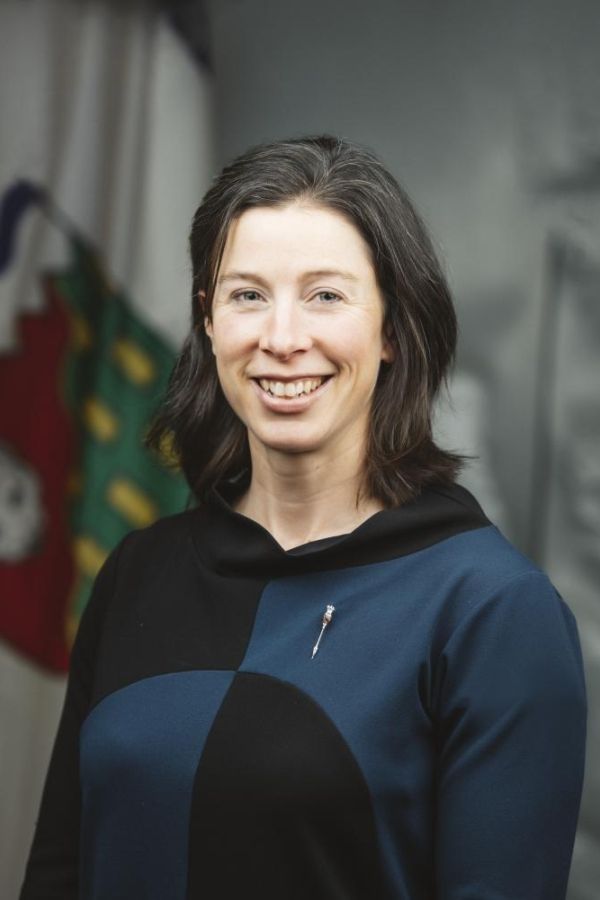
Thank you, Mr. Chair. So just following up on my colleague from Frame Lake's questions about the long-term care facilities.
Well, my first question is if we are expecting in 2025 to do an update on bed projections, why would we move forward with planning for, in particular, the long-term care facility being proposed in Fort Smith and Fort Simpson instead of waiting for the updated bed projections? Because the planning would proceed for a specific size of facility. It says the planning is for -- in Fort Smith, a 24-bed facility, and yet we see now that there's actually nobody on the waiting list. So why would we move forward this year and spend $2 million on a planning study when we -- the evidence we have now says that's probably not the right size or the right direction to go, and we're already going to update the data next year anyway? Why would -- why would we move ahead and not, say, push it back a year until we've gotten those updated bed projections? Thank you, Mr. Chair.
Thank you. I'm going to go to the Minister.

Thank you, Mr. Chair. I will turn that over to the ADM.
Thank you. I'll go to the ADM.
Thank you, Mr. Chair. Infrastructure projects, as you can imagine, take a long time to plan from beginning to the day that we open the doors. One of the key components of the planning study in a long-term care facility is, indeed, the needs assessment. The first piece that we have to clarify about the facility is how many beds are we going to build. So the projections are part and parcel of the planning study. Once we decide, determine, how many beds we need, we go to the operational plan, the functional program. Basically, we say how big the facility is, where is it, where can we locate it to, how it will -- integrate it with all the services and the programs that are in the community. The bed projections are exactly that. They are projections. But they are for multiple years - 10 years, 20 years out. The whole intention of doing the planning study and the whole intent is to have the needs assessment as a part of that, have it incorporated, and part of the justification for the size and location and how the facility will be configured. Thank you, Mr. Chair.
Thank you. I'm going to go to the Member from Yellowknife North.

Thank you, Mr. Chair. I guess where I'm getting caught up is that a needs assessment is one thing; a planning study for a specific 24-bed long-term care facility is a big step forward from an initial needs assessment. And so what I would rather see is a budget item come forward for this is -- we're going to do a needs assessment this year, and it's going to include that data that we plan to get next year, but when we're asked for the next capital year to allocate $2 million to a planning study, that seems much bigger than a needs assessment, and it doesn't seem wise to package together the initial needs assessment with the planning study for the thing we've already decided we need. Is there any way to separate those two and budget this coming year for a needs assessment and not the planning study for the 24-bed facilities in Fort Simpson and Fort Smith? Thank you, Mr. Chair.

Thank you. I'm going to go to the Minister.

Thank you, Mr. Chair. As you may see, the capital budget doesn't have amounts and so a lot of these things will -- you know, they're on here because we need to do the things that the Member is asking. Whether or not it allocates this amount or how far we go, but the planning study -- and to figure out how many bed facilities that is going to be required for that is going to cost an amount. So we need to be able to allocate dollars to be able to do that work. So, you know, it may not be what the Member -- or is saying, but there is an amount that will need to be able to -- so we could spend to do that work. We can't take it off if we don't -- like, we have to do the work. We have to do the planning study. Thank you.
Thank you. I'll go to the Member from Yellowknife North.

Thank you, Mr. Chair. So given that currently we have nobody on the waiting list in Fort Smith and initially the estimated demand from the previous studies had been that there would be a demand of 33 people by now, it seems that that's pretty far off, and given that we're already moving forward more quickly with the long-term care facility in Hay River, where there's only six people on the waiting list and the plan is to build a 24-bed facility, is it feasible to think that perhaps people in Smith might be able to access a long-term care facility in in Hay River if there was -- if we were sort of overbuilding and building extra beds in Hay River that we didn't see an immediate demand for? Thank you, Mr. Chair.
Thank you. I'm going to go to the Minister.

Thank you, Mr. Speaker. Mr. Speaker, I hear what the Member is saying but, you know, these are -- these are people's homes, this is their end of life, you know, this is where they're going to rest. We don't want to move them -- we want to keep them as close to home as we possibly can. As part of that plan, you know, when we -- the Member says that there's nobody on the waitlist, we currently have, you know, people and family members that are able to care for members and they may be on the projections because they're heavy -- heavy clients for home care and may require in the upcoming years. Age of our residents, you know, within the next 10 to 15 years, we know that builds in the -- like, this type of a process is not going to happen overnight. It's going to be over multiple years. These long-term care facilities have been discussed as far back as I think early into the 18th Assembly where the beds projections have changed significantly, and that's why we do the work that we're doing as to making sure that we're doing the proper planning for these facilities. And, you know, at the end of the day, whether it comes back that, you know, there isn't -- there is a change in these needs, then, you know, we'll reassess the project. Thank you.
Thank you. I'm going to go to the Member from Yellowknife North.

Nothing further at this time, Mr. Chair. Thank you.
Thank you. Is there any other questions from Members? There's one I had is the Member from Frame Lake.

Thank you, Mr. Chair. Mr. Chair, this is a more general question just about long-term care in general but is -- are any of the long-term care facilities that are either planned or already built going to be able to provide a standard of care which would allow repatriation of out of territory long-term care patients? Because I know that's something that we spend -- I looked back through the mains and, you know, we are spending $45 million a year on out of territory long-term care. And so by building these long-term care facilities, is there a possibility for -- what I'm really asking here is that is there any way that we're going to be achieving some cost savings? Because I know that the facilities will have their costs to operate, but are we actually building something that's going to allow us to bring people home? Thank you, Mr. Chair.
Thank you. I'm going to go to the Minister.

Thank you, Mr. Chair. Mr. Chair, the long-term care facilities, you know -- and I hear where the Member is coming from. We do spend a lot of specialized out of territory based-care for our residents in the Northwest Territories. The thing with that, it's not space in the territory. Like, we don't -- but it's the specialty that they require of care. And long-term care, the levels of care that we provide in our long-term care facilities, you know, depending on where -- you know, if you're in Inuvik, there's only a certain level of care that is able to be provided. In, you know -- and then we have different levels, like in the dementia centre here in Yellowknife, that's a different level of care. But the -- and a lot of the clients that are out of the territory require multiple different specialties that they require. And the staff that we -- you know, we're not saying we don't have the staff, but we don't have the staff capacity to be able to provide all of the needs to many of those clients. Saying that, you know, we will -- we continuously reassess what services and how many people that we could potentially bring back to the territory and what those might look like and what those numbers are, I couldn't answer that here today, because those clients, you know, it's -- although they've been away for a long time, their needs change and so we would have to reassess every client on a case by case to see whether or not our services in the territory could meet their needs. Thank you.
Thank you. I'm going to go to the Member from Frame Lake.

Thank you, Mr. Chair, appreciate it. And so I just wanted to kind of just to wrap up my comments on the long-term care. I mean, there were some things that really stood out to me, and I dug into this one a fair bit, looked at the 2015 report, and I would just note that, you know, a few of the thing that were pointed out in the report is that if you increase the number of a service, like long-term care, it can ultimately increase the demand for the service, interestingly, and that you can induce demand. And a point that I think is really important to note too is that, you know, the Northwest Territories has people who require long-term care at a much higher rate than other places in Canada and in Canada in general. And that tells me that we are not providing regular health care or keeping people healthy, you know, outside of long-term care and before long-term care, at a level that we need to be in. So just noting that investing in long-term care is important, I don't deny that in any way, but I also want to note that we need to be focusing on providing basic health care too, keeping people healthy, keeping people so that they don't end up in long-term care facilities should be our ultimate goal. So I think when I'm kind of looking at the system and looking at whether, you know, we're right sizing it, whether we're going to be spending money on that, I want to be clear that whatever savings that we can realize, I want us to be using that to keep people healthy, to provide basic health care, you know, similar to what is being talked about in our health care sustainability unit, making sure that we're, you know, right sizing our system, making sure that we are getting adequate service into the communities, adequate service in Yellowknife too. I know I've got lots of constituents who are having a hard time accessing basic primary care. I'm one of them. So we've got lots of work to do.
So I just wanted to get those comments on the record, that long-term care is important to me. I want us to be investing in it where we need to, but we've got to be careful to right size the service because it's expensive to provide, like everything else in health, and ultimately our goal should be keeping people out of long-term care so that they can live healthy lives well into their 80s and 90s and be walking around the community and not in a long-term care facility. Thank you, Mr. Chair.
Thank you. I'm going to continue on now. I'll go to the Minister, sorry.

Thank you, Mr. Chair. And I just -- you know, I want to thank the Member for raising that. And what I wanted to highlight is that the 2015 report did not really -- you know, and I think this is the work that has changed is that the focus has changed into providing preventative care to seniors, so more home support work, more home care, you know, and providing that after-hour care. And for the care that happens outside of the clinic hours, that it's not just Monday to Friday, 8:30 to 5, and that's based on those projections that were from the 2015, is that we did not have these services outside of regular hours. And so when the change in the model and how we support residents to stay at home and remain in their communities longer by increasing those supports, that is exactly what the government has changed and that's why the numbers kind of have decreased. So I just wanted to, like, make sure that that's why -- like, it's not comparing apples to apples with that report in the last projections that we did that changed so significantly. So just so that is the message out there. Thank you.
Thank you, Minister. I'm going to continue on.
Health and social services, long-term and continuing care services, infrastructure investments, $27,485,000. Does the committee agree?
Agreed.
Thank you, Members. Please return now to the Department of Health and Social Services summary found on page 38.
Health and social services, 2025-2026 Capital Estimates, $61,932,000. Does the committee agree?
Agreed.
Thank you. I'm going to go to the Member from Inuvik Boot Lake.
Committee Motion 47-20(1): Tabled Document 193-20(1): 2025-2026 Capital Estimates – Health and Social Services– Deferral of Department, Carried
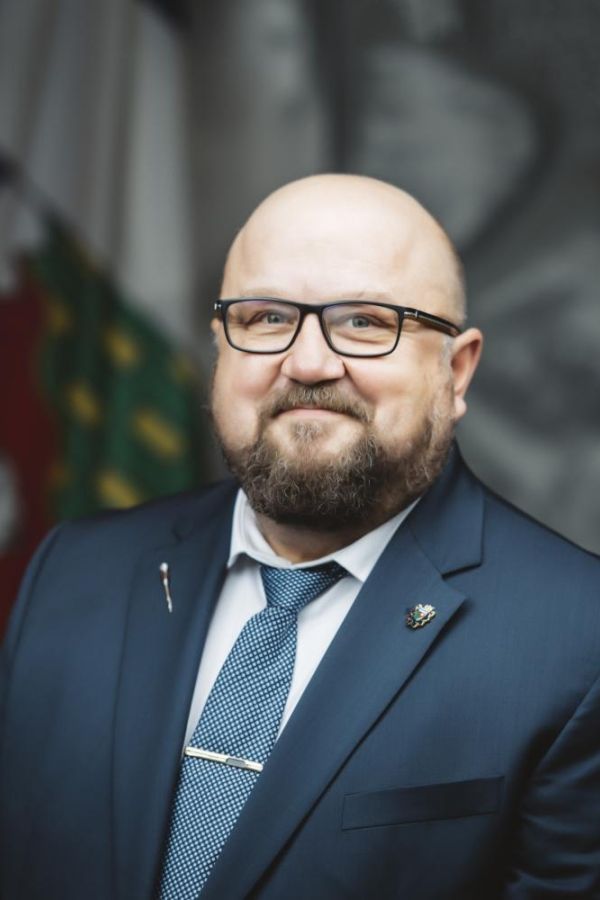
Thank you, Mr. Chair. Mr. Chair, I move that this committee defer further consideration of the capital estimates for the Department of Health and Social Services at this time. Thank you, Mr. Chair.
Thank you. The motion's in order. To the motion.
Question.
Question has been called. All those in favour? All those opposed? The motion is carried. Consideration of the Department of Health and Social Services, 2025-2026 Capital Estimates, total department is deferred.
---Carried
Thank you, committee. And thank you, Minister. Sergeant-at-arms, please escort the witnesses from the chamber.
Committee, we have agreed to consider Tabled Document 193-20(1), Capital Estimates 2025-2026, Housing Northwest Territories. Does the Minister responsible for Housing Northwest Territories wish to bring witnesses into the chamber? Minister.
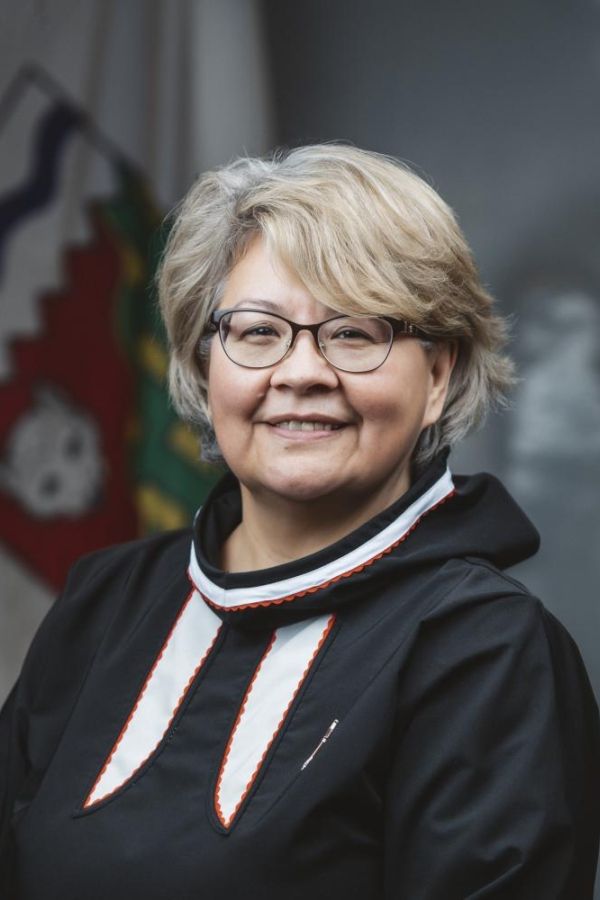
Yes, Mr. Chair.





